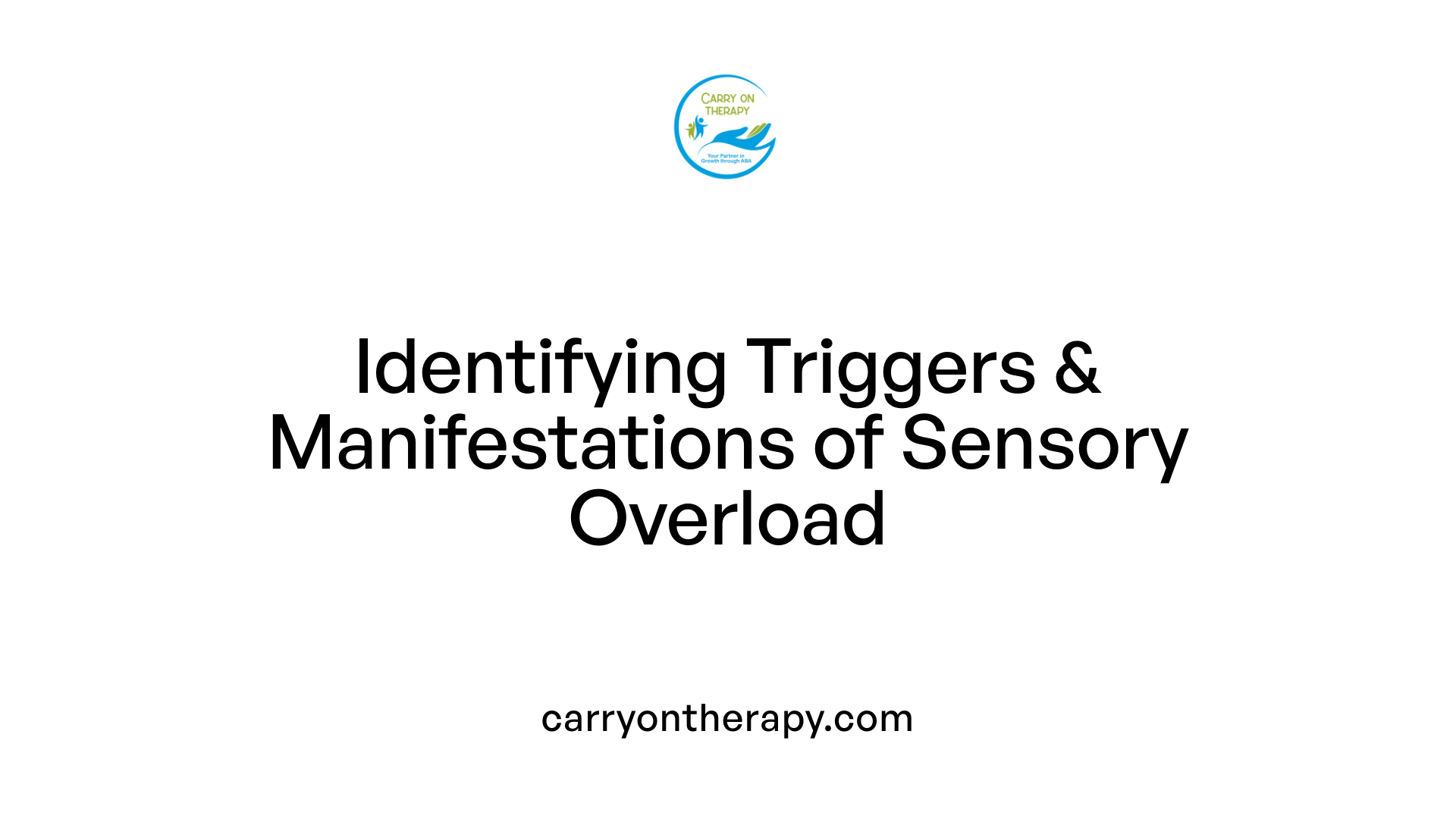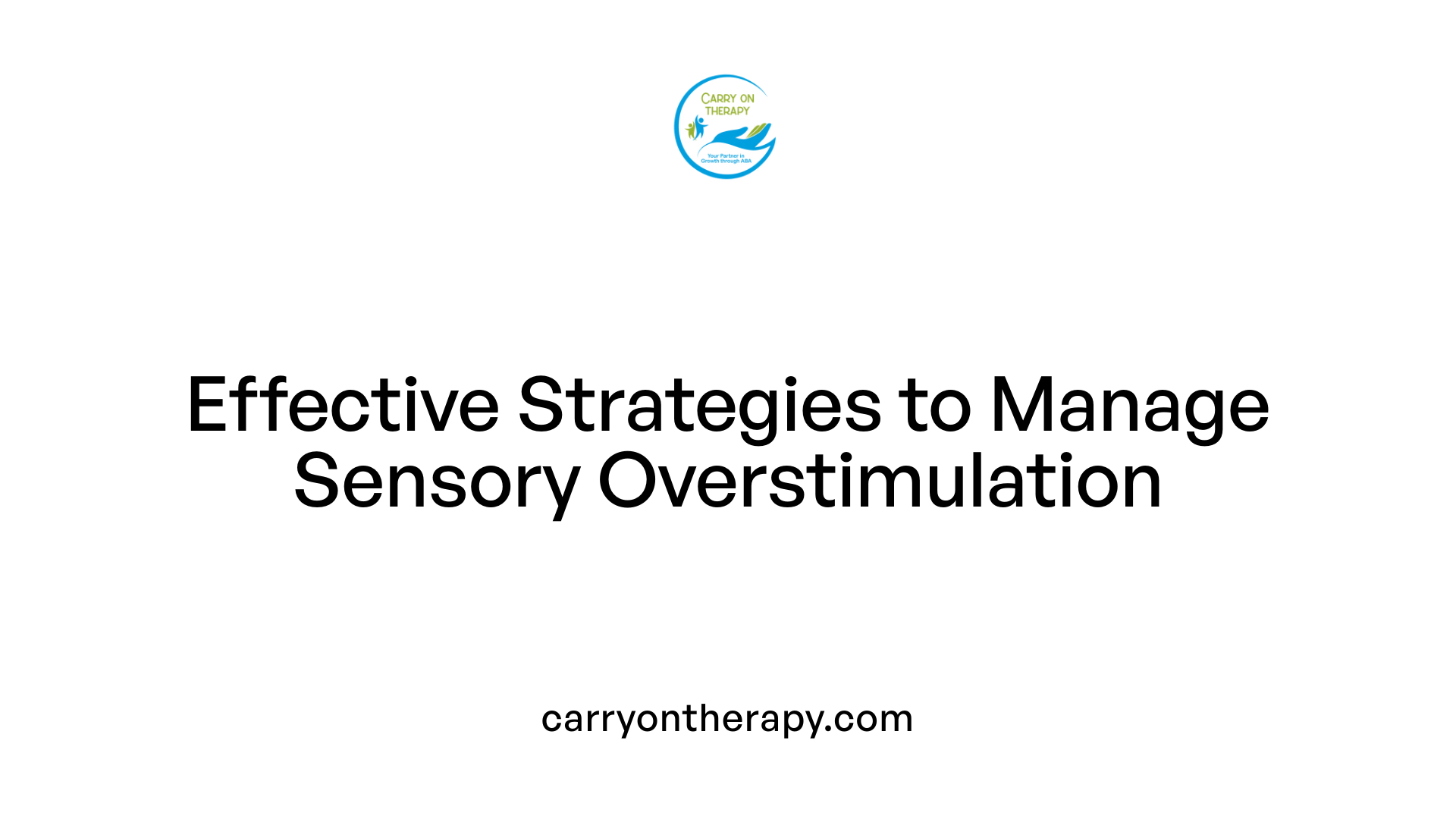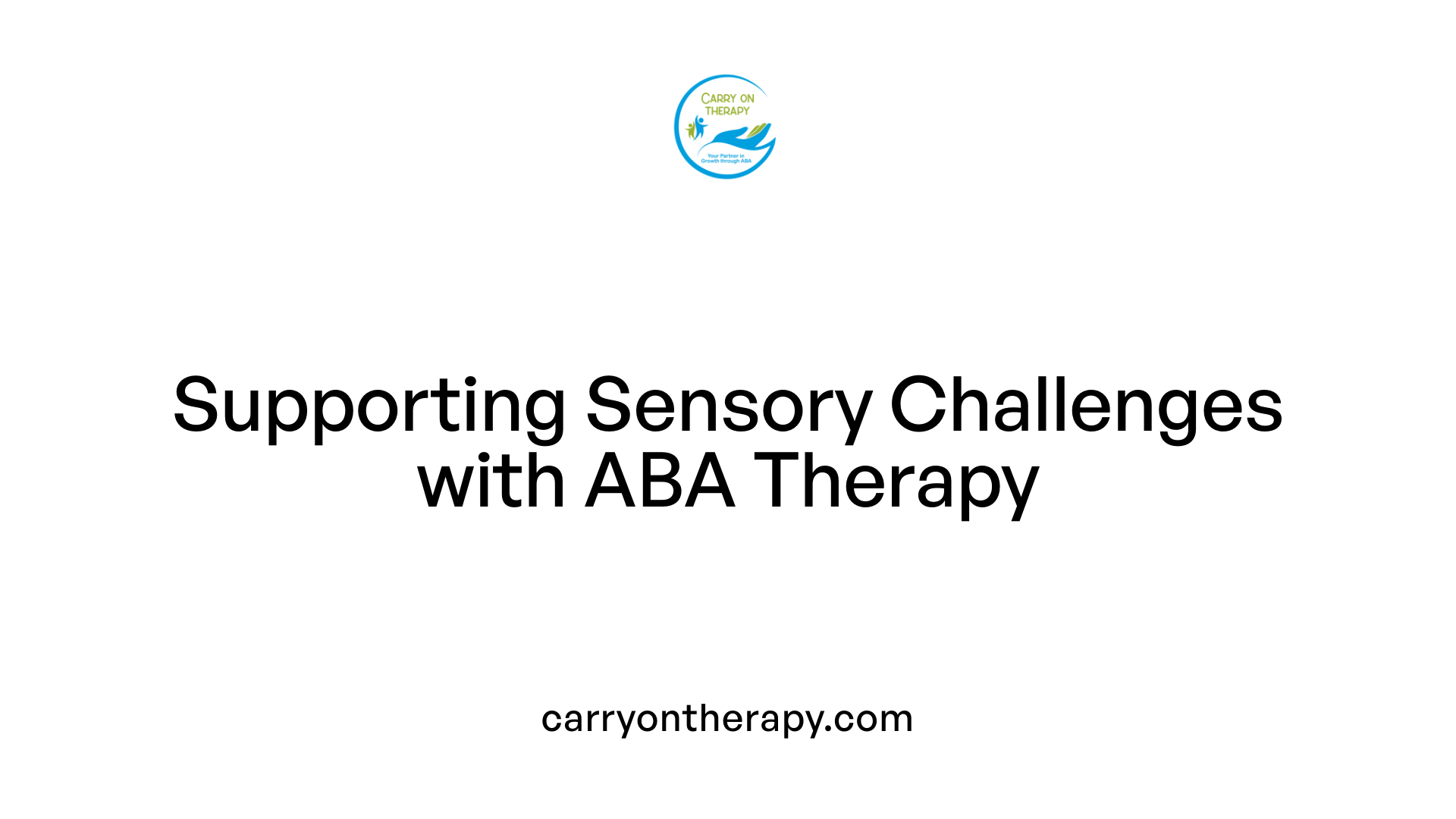What Is Overstimulation in Autism
Understanding Sensory Overload in Autism: Causes, Signs, and Supports

Introducing Overstimulation and Autism
Individuals with autism spectrum disorder (ASD) often experience unique differences in sensory processing that can lead to a state known as overstimulation or sensory overload. This occurs when the brain receives an overwhelming amount of sensory input that it cannot effectively handle. Exploring what overstimulation means, its triggers, signs, and supportive therapies helps families, educators, and professionals better support those with autism and related neurodevelopmental conditions.
What Is Sensory Overstimulation in Autism?

What is overstimulation in autism?
Overstimulation, also called sensory overload, happens when a person with autism spectrum disorder (ASD) faces an overwhelming amount of sensory input. This can include loud noises, bright or flickering lights, strong or overwhelming smells, unexpected touch, and multiple things happening at the same time. The brain struggles to process this excess information, leading to an intense reaction.
How does sensory processing differ in autism?
People with autism often have sensory processing differences. Their brains may be over-responsive or under-responsive to certain sensory inputs, making them more sensitive to environmental stimuli. For instance, 94% of adults with ASD experience sensory overload, reflecting how common this challenge is within the community.
What are the signs of overstimulation?
Signs of sensory overload in autism cover physical, emotional, and behavioral aspects:
- Physical signs: Increased heart rate, shaking, sweating, rapid breathing, and clenched fists.
- Emotional signs: Anxiety, irritability, withdrawal, and distress.
- Behavioral signs: Covering ears or eyes, fleeing the situation, meltdowns (overwhelming emotional outbursts), shutdowns (withdrawal and silence), aggression, and repetitive behaviors.
Understanding these signs helps caregivers and individuals recognize when sensory overload occurs and respond with supportive strategies.
Common Triggers and Manifestations of Sensory Overload

Typical environmental and sensory triggers
Sensory overload, or overstimulation, occurs when the brain is inundated with sensory inputs it struggles to process. For individuals with autism, common triggers include bright or flickering lights, loud or sudden noises such as sirens, crowded environments, unexpected physical touch, and strong or overpowering smells like perfumes. Additionally, settings with multiple simultaneous stimuli—such as heavily patterned environments or a blend of loud noises and bright lights—can similarly overwhelm.
Physical and emotional manifestations
When experiencing sensory overload, individuals may display physical symptoms such as increased heart rate, sweating, shaking, and rapid breathing. Emotional effects often involve heightened anxiety, irritability, withdrawal, or distress. Overstimulation can also lead to headaches, dizziness, nausea, and difficulty regulating emotions, further impacting wellbeing.
Behavioral responses to sensory overload
Behavioral signs of sensory overload include covering ears or eyes, fleeing from the situation, repetitive behaviors, meltdowns, or aggressive outbursts. Meltdowns are intense emotional reactions triggered by overwhelming sensory input, whereas shutdowns involve withdrawal and silence. Both responses indicate that the sensory system has become overwhelmed.
Understanding these triggers and how sensory overload manifests helps in recognizing when individuals are struggling and informs strategies to support them effectively.
The Role of Sensory Processing Disorder in Overstimulation

What is Sensory Processing Disorder (SPD)?
Sensory Processing Disorder refers to differences in how the brain processes sensory input from the environment. Individuals with SPD might experience over-responsivity, reacting strongly to stimuli; under-responsivity, showing reduced reaction; or sensory craving, seeking more intense sensory experiences. These sensory subtypes can deeply affect daily functioning and emotional regulation.
How Does SPD Relate to Autism and Overstimulation?
SPD is especially common in people with neurodevelopmental conditions such as autism spectrum disorder (ASD). Around 94% of adults with ASD experience sensory overload, a state where sensory input becomes overwhelming. This overload often results from the brain's difficulty processing sensory information effectively, leading to symptoms like shaking, increased heart rate, or emotional distress. Because SPD impacts sensory response, it plays a central role in causing overstimulation for many autistic individuals.
Impact of Sensory Subtypes on Experience
The various sensory processing patterns seen in SPD influence how individuals perceive and respond to their surroundings. Over-responsivity can cause distress in noisy or brightly lit environments. Under-responsivity might lead to missing important sensory cues, while sensory seeking behaviors may result in constantly looking for specific sensations. All these patterns can contribute to challenges with emotional regulation and social interactions.
Clinical Recognition Despite Lack of Official Diagnosis
Although there is no official medical diagnosis for SPD, healthcare providers widely acknowledge its existence and importance. Recognizing SPD helps guide treatment approaches, such as occupational therapy and sensory integration, to better support individuals. This recognition is crucial in addressing overstimulation, especially within groups like autistic individuals who are prone to sensory sensitivities.
| Aspect | Description | Relevance to Overstimulation |
|---|---|---|
| Over-responsivity | Heightened reactions to sensory input | Can trigger sensory overload in noisy or busy settings |
| Under-responsivity | Reduced sensitivity leading to missed cues | May cause difficulties in responding to environments properly |
| Sensory seeking | Craving intense sensory experiences | May lead to behaviors aimed at managing sensory needs |
| SPD & Autism | High overlap; 94% of autistic adults report sensory overload symptoms | Sensory processing differences contribute directly to overload |
| Diagnosis Status | Not an official medical diagnosis but clinically recognized | Recognition supports tailored therapies and interventions |
Practical Strategies to Manage Overstimulation

What strategies help manage sensory overload in autism?
Managing sensory overload, especially in individuals with autism, requires a thoughtful blend of environmental adjustments and personalized sensory tools.
Environmental modifications
Creating sensory-friendly environments is crucial. This includes dimming lights to reduce glare, setting up quiet spaces free from overwhelming noise and visual stimuli, and planning outings during less busy times to minimize exposure to crowds. Adjusting device settings with screen overlays can also help reduce visual strain.
Sensory diets and tools
Sensory diets consist of personalized activities and tools that help regulate sensory input. Examples include swinging motions, weighted blankets that provide calming deep pressure, calming music, stress balls, and sensory toys designed to soothe. These aids help individuals maintain comfort and focus throughout the day.
Techniques for sensory regulation
Techniques such as wearing noise-cancelling headphones or using white noise mask intrusive sounds. Sunglasses can lessen the impact of bright lights. Additionally, tactile items like stress balls and weighted blankets provide comforting sensory input to stabilize reactions to the environment.
Importance of sensory breaks and mindfulness
Regularly scheduled sensory breaks allow individuals to step away from overwhelming stimuli and reset their sensory systems. Incorporating mindfulness practices during these breaks encourages emotional regulation and calmness, making it easier to handle sensory challenges.
By combining these strategies, individuals with autism and sensory processing differences can better manage overstimulation, improving their comfort, behavior, and overall quality of life.
Applied Behavior Analysis (ABA) Therapy: Supporting Sensory Challenges in Autism

What is Applied Behavior Analysis (ABA) therapy and how is it used to support individuals with autism?
ABA therapy is a science-based approach that uses behavior learning principles to enhance skills for individuals with autism. It focuses on identifying factors in the environment that influence behavior and then teaching effective coping strategies to manage sensory challenges.
How does ABA identify triggers and teach coping skills?
ABA therapists carefully collect data to pinpoint specific sensory triggers causing distress or overstimulation. They then work with individuals to develop practical coping mechanisms, such as requesting sensory breaks, using noise-canceling headphones, practicing deep breathing, or employing visual aids. This personalized instruction helps individuals better regulate sensory input in daily life.
What role do desensitization and sensory diets play in ABA?
Desensitization in ABA involves gradually and carefully exposing individuals to sensory stimuli to reduce sensitivity over time. Alongside this, therapists design sensory diets—customized routines including activities like swinging, weighted blankets, calming music, or sensory toys. These interventions help regulate the sensory system and improve overall comfort.
How does ABA therapy collaborate with educational settings?
ABA programs often involve teamwork between therapists, families, and schools to create supportive learning environments. This collaboration enables sensory accommodations such as scheduled breaks, quiet zones, and use of sensory tools during school hours. Teaching self-advocacy skills in these settings empowers children to communicate their sensory needs confidently and apply calming strategies independently.
Benefits and Professional Expertise Behind ABA Therapy
What are the key benefits of ABA therapy for individuals with autism?
ABA therapy offers numerous advantages for individuals with autism. It enhances communication and language skills, enabling clearer expression and understanding. The therapy improves social interactions through naturalistic and play-based methods, helping individuals build meaningful relationships. ABA also promotes independence by teaching essential daily living skills. Importantly, it addresses problematic behaviors often linked to sensory overload by teaching emotional regulation and coping strategies. Personalized to each person's needs, ABA substantially improves quality of life.
Who typically provides ABA therapy services and what qualifications do they have?
Professional ABA therapy is delivered by specialists such as Board Certified Behavior Analysts (BCBAs), licensed behavior analysts, and trained therapists. These practitioners usually hold degrees in psychology, education, or related fields. They undergo rigorous supervised fieldwork and must pass certification exams to demonstrate competence. To maintain certification and stay updated on best practices, they also engage in ongoing continuing education. This ensures that treatment remains effective, ethical, and tailored to individual requirements.
Are there any common misconceptions or criticisms about ABA therapy?
ABA therapy sometimes faces misunderstandings. Some believe it is rigid or focused on punishment, but modern ABA focuses on positive reinforcement and respects the dignity of the individual. Therapists use flexible approaches tailored to each person’s preferences and needs. The therapy aims to develop functional skills and promote independence rather than enforcing robotic compliance. These advances make ABA a compassionate and adaptive intervention, dispelling many past concerns.
Occupational Therapy and Sensory Integration Approaches
How does occupational therapy support individuals with sensory processing issues in autism?
Occupational therapy plays a vital role in supporting individuals, especially those with autism spectrum disorder, who face sensory processing challenges. Therapists use sensory integration therapy that carefully introduces specific sensory inputs, aiming to help regulate how the brain processes and responds to sensory information. This approach assists individuals in managing over-responsivity or under-responsivity to sensory stimuli.
Sensory integration therapy techniques
Sensory integration therapy involves providing controlled sensory experiences tailored to the individual's needs. Techniques may include activities that engage tactile, vestibular, and proprioceptive senses, such as swinging, jumping, or using textured materials. These interventions help the nervous system gradually adapt and improve sensory modulation.
Role in motor skills development and daily functioning
Occupational therapy is also crucial for developing fine and gross motor skills, particularly for children with dyspraxia or postural disorders linked to sensory processing differences. Improving these skills enhances daily functioning, enabling individuals to achieve developmental milestones, improve self-care, and participate in play and social activities effectively.
Routine sensory activities recommended for home and school
Therapists often recommend incorporating routine sensory activities and tools into home and school environments to support ongoing sensory regulation. Examples include:
- Using noise-canceling headphones to reduce auditory overwhelm
- Providing fidget toys to aid concentration
- Scheduling sensory breaks during the day
- Creating designated quiet spaces for calming down
Individualized sensory diets and plans help children and adults anticipate and manage sensory input throughout their daily routines, promoting better self-regulation and comfort.
Advocacy, Self-advocacy, and Professional Support: Empowering Individuals with Autism
Importance of Communicating Sensory Sensitivities
For individuals with autism, clearly communicating sensory sensitivities to family, friends, and colleagues is essential. Sharing which sounds, lights, or textures cause discomfort can foster understanding and create supportive environments. This communication helps others respect boundaries and avoid common triggers such as loud noises or bright lights.
Role of Self-advocacy and Empowerment
Developing self-advocacy skills empowers people with autism to express their needs confidently. Teaching children and adults to identify when they feel overwhelmed and request accommodations—like sensory breaks or noise-canceling headphones—encourages independence and reduces feelings of isolation. Self-advocacy also builds resilience by promoting proactive coping strategies and emotional regulation.
Collaboration with Professionals and Neuro-specialized Clinics
Working alongside occupational therapists, behavior analysts, and neuro-specialized clinics like Memphis Neurology enables tailored approaches to manage sensory challenges. Professionals can help design personalized sensory diets, recommend environmental modifications, and provide therapies such as sensory integration or ABA. This teamwork ensures strategies meet individual goals for comfort, development, and daily functioning.
Impact on Reducing Anxiety and Improving Social Integration
Advocacy and professional support play a critical role in decreasing anxiety caused by sensory overload. By creating predictable, sensory-friendly spaces and teaching calming techniques, individuals experience fewer distressing episodes. Improved management of sensory input enhances focus, behavioral regulation, and social participation—leading to stronger relationships and a better quality of life.
Supporting Sensory Well-being in Autism
Overstimulation is a common and challenging experience for many individuals with autism, rooted in differences in sensory processing. Recognizing the triggers, signs, and impacts of sensory overload is essential for providing sensitive and effective support. Therapies such as Applied Behavior Analysis and occupational therapy offer evidence-based strategies to help individuals manage sensory input, reduce distress, and develop crucial skills. Furthermore, creating supportive environments, advocating for sensory-friendly accommodations, and empowering self-advocacy foster improved quality of life. Through collaborative efforts among families, professionals, and communities, those with autism can achieve greater comfort, emotional regulation, and participation in daily life.
References
- Sensory Processing Disorder (SPD): Symptoms & Treatment
- How Adults With Autism Can Manage Sensory Overload
- Autism Overstimulation: Causes, Signs, and Solutions
- Why You Feel Overstimulated
- How to Become an ABA Therapist - School of Education
- How to Become an Applied Behavior Analyst (ABA) Therapist
- How to Become an ABA Therapist | ASU Online
- Applied Behavior Analysis (ABA)
- The Top 10 Reasons Children With Autism Deserve ABA
- Applied Behavior Analysis (ABA)







